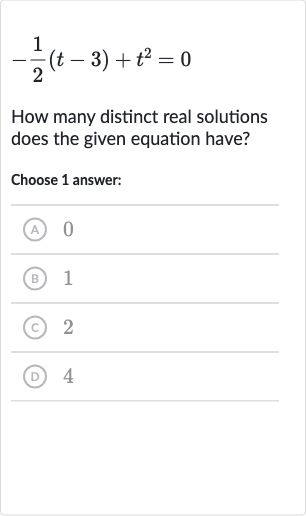Full solution
Q. How many distinct real solutions does the given equation have?Choose answer:(A) (B) (C) (D)
- Write equation: Write down the given equation.The equation is:
- Multiply by : Multiply both sides of the equation by to get rid of the fraction.This simplifies to:
- Rearrange to quadratic form: Rearrange the equation to standard quadratic form.
- Use discriminant: Use the discriminant to determine the number of real solutions.The discriminant of a quadratic equation is .For the equation , , , and .Discriminant =
- Interpret discriminant: Interpret the discriminant.Since the discriminant is negative , there are no real solutions to the equation.

